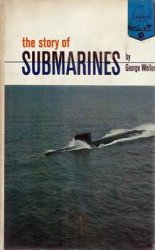Erwin Johannes Eugen Rommel was born at Heidenheim, near Ulm (in the duchy of Swabia, part of the kingdom of Wurttemberg in south-west
Germany), on 15 November 1891, the second of four children - three sons and one daughter. His father, Erwin Rommel, was a teacher of mathematics at a secondary school at Heidenheim (later a headmaster at Aalen) and his mother, Helene von Luz, was the daughter of a local government official. The young Rommel displayed a greater aptitude for outdoor activities than academic studies, though he did show some ability at mathematics. By the time Erwin started his three-year course at Real gymnasium at the age of 16, his fate had already been decided; he would join the army. This was only possible for those who, like Rommel, had an upper-middle-class background, and even then it was not easy.
German officers were recruited at a local level by regiments and, following their training, they were commissioned by the commanding officer following a vote by the other officers. This system ensured that the officer ranks were filled with those of the required social background. The most prestigious units - cavalry or guards regiments - were essentially reserved for members of the nobility or those families with a long tradition of military service. Even Rommel's first choices, the artillery and engineers, were beyond his grasp, and
A German Stosstrupp (assault detachment) training on the Isonzo front, October 1917. Their armament includes two British Lewis machine guns. (Private collection)

On 19 July 1910 the young Erwin Rommel became a Fahnenjunker (officer candidate) in Infanterie-Regiment Konig Wilhelm I (6. Wurttembergisches) Nr. 124 in Weingarten. After eight months of training he was sent to the Kriegsschule in Danzig in March 1911; this was the equivalent of a military academy and gave a standardized course of training to all the officers of the German Army. (There were ten of them across the country, established in 1810.) Rommel graduated on 15 November 1911, having met his future wife, the 17-year-old Lucia Maria Mollin, whom he called Lucie. Back with his regiment, Rommel was commissioned Leutnant (second lieutenant) on 27 January 1912 and began training recruits himself.
The concluding remarks of the Danzig Kriegsschule are worth noting; Rommel was average in all areas apart from leadership, in which he was classified 'good'. Rommel's service with IR 124 lasted until 1 March 1914, when he was attached to Feld-Artillerie-Regiment Nr. 49 at Ulm; here he served in the 4. Batterie until 31 July. He was back with IR 124 on 1 August 1914, the day World War I started, and two days later he and his unit left for the Western Front as part of 5. Armee. From 21 August Rommel was in action in the Meuse Valley on the Verdun front, first as a platoon commander then as regimental aide. On 24 September he was wounded in the thigh, hospitalized and on the 30th awarded the Iron Cross second class. He was back with his regiment in January 1915, now commanding its 9. Kompanie, in time to be part of another attack against Verdun. On 29 January he led his company in attack, only to be soon surrounded by the French; through
Inspired leadership he managed to clear the enemy positions and get back to the German lines. That earned him the Iron Cross first class on 22 March, the first lieutenant of his regiment to receive this award. In June Rommel, now a platoon commander owing to the arrival of a new intake of officers, took part in an offensive in the Argonne; in July he was slightly wounded in the leg, which earned him a spell of leave back home and then, in September, he was promoted to Oberleutnant (first lieutenant). In October Rommel was transferred to the newly formed Wurttembergisches Gebirgs-Bataillon (WGB), a mountain infantry battalion, as a company commander.
Between December 1915 and October 1916 the WGB was based on the Western Front in the Vosges area, then it was transferred to the Romanian front, where Rommel was introduced to a form of warfare he had not encountered before, a war of movement. Shortly after this he took advantage of a short leave to marry Lucie on 27 November. Both the organization of the battalion and the new type of warfare suited Rommel well. With several strong rifle and machine-gun companies, the WGB could be broken up into ad hoc combat groups according to the need of the moment, which led to Rommel often commanding more than a single company. Flexibility, speed and ingenuity all were key elements of the new type of warfare the Germans were testing in the field. Between January and July 1917 the WGB was back on the Western Front, going again to Romania in August where it fought the battle for Mount Cosna. Here, on 9 August, Rommel led an audacious attack with practically the entire battalion. Though he was wounded in the arm in the process, Rommel managed to seize the height and defend it from the counterattack that followed. At the end of August the WGB was pulled out of the line and, after some rest (which Rommel spent with Lucie on the Baltic), sent to Italy in September. Here Rommel's career would have its real beginning.
After his promotion to Generalmajor on 1 August 1939, Rommel took command of Hitler's HQ during the Polish campaign. Note the 'Fuhrerhauptquartier' cuffband on the left sleeve of Rommel's uniform. (NARA)




 World History
World History









